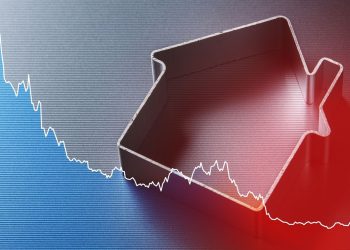At last month’s Federal Open Market Committee (FOMC) meeting, Federal Reserve Chair Jerome Powell said he expected the effects of tariffs to begin showing up in the summer of this year. The latest Consumer Price Index (CPI) from the U.S. Bureau of Labor Statistics (BLS) provides at least some evidence the cautious approach was merited.
In June, annual inflation as measured by the Consumer Price Index (CPI) was at 2.7%, continuing the upward swing from May’s reading of 2.4% annual inflation.
Bright MLS Chief Economist Lisa Sturtevant said that “today’s inflation report is not good news for the housing market,” not just due to the “sluggish” housing market itself, but also because “prospective homebuyers are increasingly feeling the financial stress of higher prices for everyday things which makes it harder to think about buying a home.”
Sturtevant also pointed to the CPI’s specific price indices as signs that inflation is taking an economic toil.
“So far, inflation has not hit the new automobile sector, where the index dropped by 0.3% in June. However, prices of household furnishings and appliances, toys and computers were up sharply in June, and apparel prices also rose faster than average,” said Sturtevant in a statement. “It is too soon to tell how much of an impact tariffs will have broadly on prices consumers pay, but the June data suggests that inflation is moving in the wrong direction.”
Realtor.com® Senior Economist Jake Krimmel was similarly hesitant to estimate the extent of tariff impact.
“It remains unclear if and when the U.S. economy will feel the true brunt of a slew of new tariffs,” said Krimmel in a statement. “It is worth noting that June’s figures do not reflect the most recent round of tariff announcements, including a new copper tariff that could affect housing construction in the months ahead.”
The shelter index of the CPI rose 0.2% month-over-month in June and “was the primary factor in the all items monthly increase,” according to the BLS. Krimmel cited shelter inflation data as “normalizing” and pointed to easing rent growth. However, he also noted that mortgage rates are ticking up and that higher inflation will likely keep rates elevated.
“With high mortgage rates and weak home-buying sentiment, more buyers are staying on the sidelines,” said Krimmel. “For those who do reenter the market, conditions are more balanced than in recent years—price cuts are more common and buyers are regaining leverage. Still, unless inflation softens and long-run rates decline, housing activity is likely to stay subdued heading into late summer.”
Both Sturtevant and Krimmel agreed that the Federal Reserve moving to cut interest rates in July is now extremely unlikely in light of this CPI reading. Powell has previously said that “the size of the tariffs” and resulting higher forecasts for inflation spurred a pause on the Fed cutting interest rates.
Powell has been facing intense pressure from the president and his administration to cut interest rates—and to resign from his position if he won’t. Christopher Waller, a member of the Federal Reserve Board of Governors, said last week in a conversation at the Dallas Fed that “as long as the economy is doing okay, we should cut rates.”
“If there’s any blip-up in inflation because of tariffs, you just look through it, and keep moving,” he said. “We see tariff effects, they’re not zero, on some goods not all goods, and other goods are adjusting in a way that sort of offsets it.”
Notably, Waller’s name has been floated as a potential replacement for Powell as Fed chair. In his recent remarks, Waller acknowledged he was “in the minority” as far as a July rate cut, but claimed his reasons were “not political.”
Right now, though, as Sturtevant put it, Powell “has repeatedly said that the central bank’s decision will be ‘data-driven’ and…the data suggest no change to rates at the next meeting of the FOMC.”
For the full CPI release, click here.












